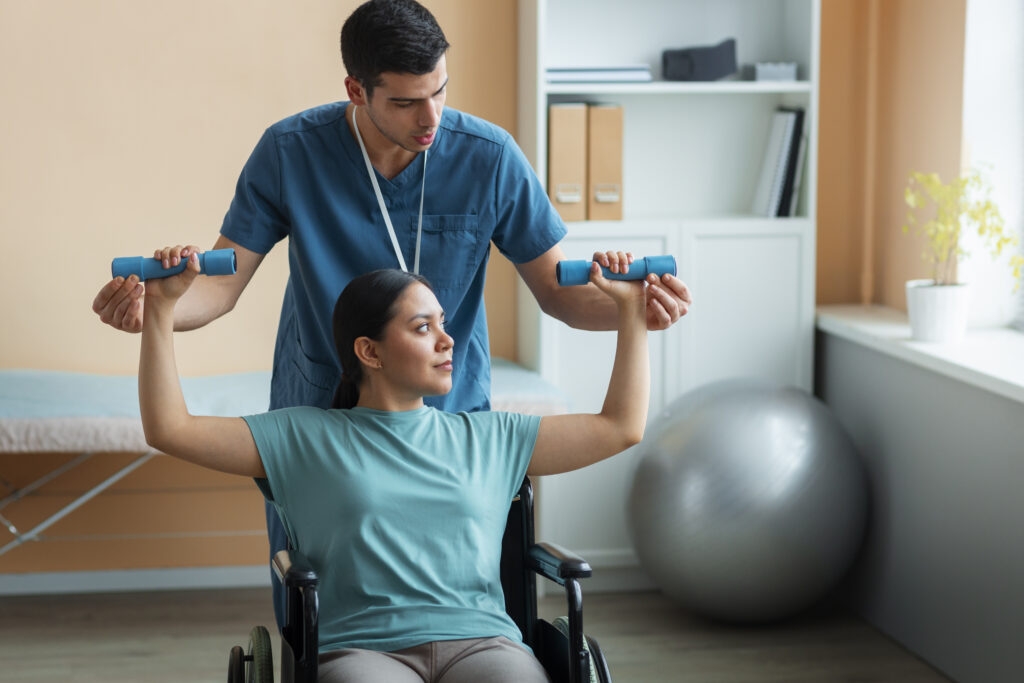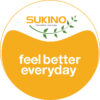Life after a stroke can be a challenging journey, but with the right approach to post-stroke rehabilitation, it is possible to regain independence and lead a fulfilling life. Post-stroke rehabilitation plays a critical role in the recovery process, helping patients rebuild their physical, cognitive, and emotional abilities. Sukino Healthcare understands the importance of individualized care and offers comprehensive post-stroke rehabilitation programs that focus on helping patients overcome the hurdles that arise after a stroke. In this guide, we will delve into the various aspects of post-stroke rehabilitation and explore how it can restore quality of life.
Understanding the Importance of Post-Stroke Rehabilitation
Post-stroke rehabilitation is a crucial phase that begins shortly after a stroke, aiming to minimize long-term effects and improve the patient’s functional abilities. A stroke affects each person differently, and the extent of the damage depends on factors such as the location of the stroke, its severity, and how quickly medical help was provided.
For stroke survivors, post-stroke rehabilitation can involve a variety of therapies, including physical therapy, speech therapy, and cognitive rehabilitation. The earlier rehabilitation starts, the better the chances of recovery, as the brain is still in a phase of reorganization, known as neuroplasticity, where it can rebuild lost connections.
Benefits of Early Intervention in Post-Stroke Rehabilitation:
- Maximizing Recovery: Early rehabilitation efforts can help patients regain movement, speech, and cognitive abilities more effectively.
- Preventing Complications: Rehabilitation helps to prevent complications such as muscle atrophy, joint stiffness, and secondary conditions like depression.
- Restoring Independence: A well-structured rehabilitation program aims to help stroke survivors regain the skills needed for daily living activities.
The Role of Physical Therapy in Post-Stroke Rehabilitation
Physical therapy is often the cornerstone of post-stroke rehabilitation. After a stroke, many individuals experience muscle weakness, paralysis on one side of the body (hemiplegia), and problems with balance and coordination. Physical therapists work closely with patients to address these challenges by designing tailored exercises that focus on restoring mobility, strength, and coordination.
Key Aspects of Physical Therapy:
- Mobility Exercises: These exercises help improve the range of motion in the limbs affected by the stroke, allowing patients to regain their ability to walk and move independently.
- Strength Training: Building muscle strength is crucial, especially for stroke survivors who have experienced weakness in their limbs. Strengthening exercises help restore function and reduce the risk of falls.
- Balance and Coordination: Falls are a major concern after a stroke. Physical therapy includes balance training to improve stability and reduce the risk of falls during everyday activities.
Sukino Healthcare’s post-stroke rehabilitation program offers specialized physical therapy sessions to help patients regain control over their bodies, promoting better mobility and independence.

Speech and Language Therapy: Regaining Communication Skills
For many stroke survivors, speech and language abilities are significantly affected. This condition, known as aphasia, can make it difficult to speak, understand language, read, or write. Speech therapy plays a vital role in addressing these issues, helping patients relearn language skills and develop alternative methods of communication if necessary.
How Speech Therapy Helps in Post-Stroke Rehabilitation:
- Improving Speech Clarity: Therapists work on articulation, fluency, and voice modulation to improve clarity of speech.
- Rebuilding Language Skills: Stroke survivors may have difficulty finding words or understanding conversations. Therapy focuses on rebuilding these language skills through exercises and activities.
- Cognitive Communication Therapy: Speech therapists also work on cognitive aspects such as memory, attention, and problem-solving skills, which are crucial for effective communication.
At Sukino Healthcare, speech-language pathologists collaborate with patients to develop personalized therapy plans aimed at improving communication and cognitive function.
Cognitive Rehabilitation: Restoring Mental Sharpness
Stroke can impair cognitive functions, leading to memory loss, difficulty with concentration, and challenges in problem-solving. Cognitive rehabilitation is an essential part of post-stroke care, focusing on enhancing mental processes and helping patients regain independence in their daily lives.
Key Areas of Cognitive Rehabilitation:
- Memory Exercises: Therapists design memory exercises that help improve short-term and long-term recall.
- Attention Training: Stroke survivors often struggle with concentration. Cognitive rehabilitation includes exercises that help improve attention span and focus.
- Problem-Solving and Decision-Making Skills: Patients relearn how to solve problems, make decisions, and plan daily activities, which are vital for restoring independence.
Sukino Healthcare’s approach to post-stroke cognitive rehabilitation combines mental exercises with real-life activities to help patients regain their cognitive sharpness.
Occupational Therapy: Adapting to Daily Life After Stroke
Occupational therapy focuses on helping stroke survivors regain the ability to perform daily tasks, such as dressing, eating, and bathing. These tasks are often challenging after a stroke, but with the right therapeutic approach, patients can relearn how to perform them independently.
Key Components of Occupational Therapy:
- Activities of Daily Living (ADL) Training: Occupational therapists guide patients in relearning essential self-care tasks, helping them achieve greater independence.
- Home Modifications: To make daily life easier, therapists may suggest adaptations in the patient’s living environment, such as grab bars, ramps, or specialized utensils.
- Adaptive Techniques: Therapists teach patients how to adapt tasks to their current abilities, ensuring they can manage everyday activities more comfortably.
At Sukino Healthcare, occupational therapists work with patients to improve their ability to function at home and in the community, offering practical solutions to overcome limitations.
Emotional Support and Psychological Therapy
The emotional toll of a stroke can be just as challenging as the physical effects. Many stroke survivors experience feelings of frustration, anxiety, or depression during their recovery journey. Psychological therapy and emotional support are crucial for helping patients cope with these challenges and stay motivated throughout their rehabilitation.
Common Emotional Challenges After a Stroke:
- Depression: Stroke survivors are at a higher risk of developing depression due to the sudden loss of independence and physical abilities.
- Anxiety: Worries about future health, the possibility of another stroke, and the challenges of recovery can lead to anxiety.
- Frustration and Anger: Stroke survivors may feel frustrated by their limitations or the slow pace of recovery.
At Sukino Healthcare, psychological therapy is integrated into the post-stroke rehabilitation program to ensure that patients receive the emotional support they need. Counseling and therapy sessions help patients develop coping mechanisms and maintain a positive outlook during recovery.
Family Involvement in Post-Stroke Rehabilitation
A successful recovery from a stroke often involves the active participation of family members. Family involvement plays a critical role in providing emotional support and assisting with daily activities during the rehabilitation process. At Sukino Healthcare, we believe in engaging families in the recovery process to ensure a supportive and encouraging environment for the patient.
How Families Can Support Stroke Survivors:
- Providing Daily Assistance: Helping with daily tasks such as bathing, dressing, and meal preparation can ease the burden on stroke survivors.
- Offering Emotional Support: A positive and encouraging attitude from family members can motivate patients to stay committed to their rehabilitation.
- Learning About Stroke Recovery: Understanding the rehabilitation process and the challenges stroke survivors face can help families offer better support.
Conclusion
Life after a stroke may present challenges, but with a comprehensive post-stroke rehabilitation plan, it is possible to regain independence and improve your quality of life. Post-stroke rehabilitation is a journey of rebuilding physical, cognitive, and emotional strength, and with the right support system, stroke survivors can achieve remarkable recoveries. Sukino Healthcare offers a holistic approach to post-stroke rehabilitation, combining physical, cognitive, and emotional therapies to ensure the best possible outcomes for our patients.
If you or a loved one is navigating life after a stroke, don’t hesitate to seek professional help. With Sukino Healthcare’s dedicated post-stroke rehabilitation services, you can embrace recovery and reclaim control over your life.
We are India’s first comprehensive continuum care provider. We provide multidisciplinary out of hospital care to acute and post-acute and chronically ill patients at our critical care facilities and your home.


